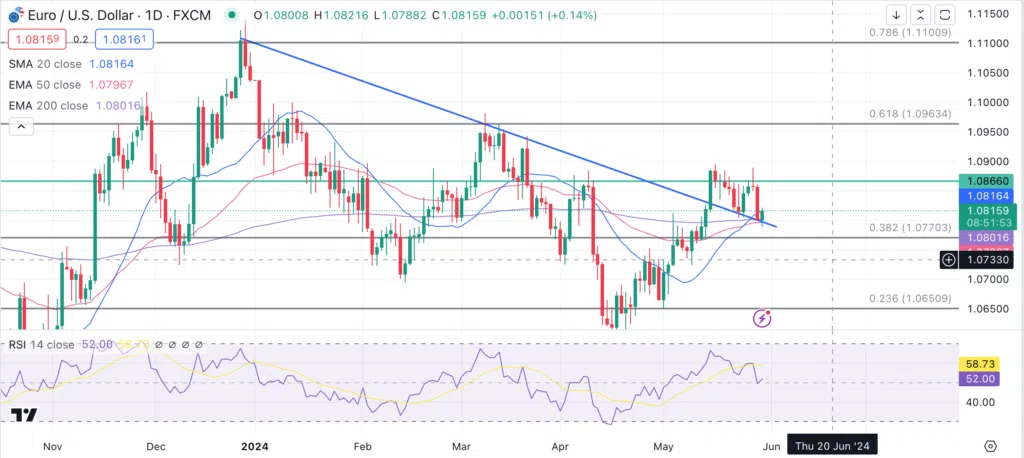-
Best Forex Brokers
Our top-rated Forex brokers
-
Brokers for Beginners
Start trading here
-
Demo Accounts
Learn to trade with no risk
-
Lowest Spread Brokers
Raw spreads & low commissions
-
ECN Brokers
Trade with Direct Market Access
-
Islamic Account Brokers
Best accounts for Muslim traders
-
Market Maker Brokers
Fixed spreads & instant execution
-
All Trading Platforms
Find a platform that works for you
-
MetaTrader4 Brokers
The top MT4 brokers in the UK
-
MetaTrader5 Brokers
Best MT5 Brokers in the UK
-
TradingView Brokers
Best TradingView Brokers
-
cTrader Brokers
The top cTrader brokers in the UK
-
Copy Trading Brokers
Copy professional traders
-
Spread Betting Platforms
Tax-free trading
-
Forex Trading Apps
Trade on the go from your phone
-
Forex Brokers in UK
Trading from UK? Discover our top-rated brokers here!
-
Forex Brokers in USA
Trading from USA? Discover our top-rated brokers here!
-
Forex Brokers in Canada
Trading from Canada? Discover our top-rated brokers here!
-
Forex Brokers in Dubai
Trading from Dubai? Discover our top-rated brokers here!
At the start of 2024, investors were looking to the US Federal Reserve to start a cycle of lowering interest rates. Markets were jubilant: Stocks were up and expectations of 4 or even 5 rate cuts were being priced in.
Europe was still on shaky ground, inflation was riding high and Germany, the powerhouse of EU growth, had fallen into recession. Europe watchers were hoping that an early cut in US rates would trigger the same in the EU, paving the way for looser spending and providing a springboard back to higher growth.
Fast-forward to the present and things are looking very different. US economic resilience in the face of high interest rates has surprised everyone and inflation has remained sticky as a result. Repeated warnings of higher-for-longer rates from members of the Federal Reserve’s Open Market Committee (FOMC) have annihilated expectations of a cycle of rate cuts. The earliest the FOMC is expected to lower interest rates in the US is now September, and that is only a 40% chance. It remains likely that we will see only a single rate cut this year in November.
The picture for the EU has also changed drastically. Inflation is coming down across the bloc and is already close to the 2% target in many EU nations. Meanwhile, recent economic indicators are pointing to an improving business climate. The pressure on the European Central Bank to lower interest rates in its next meeting (next Thursday, June 6th) is immense and the market is fully expecting a cut.
We have already seen the beginnings of a policy rate divergence between Europe and the US, with central bank cuts in the Czech Republic, Hungary and Sweden. Once the ECB follows suit, the economic implications could be severe, with the EUR expected to enter a period of sustained weakness against the USD. Yes, there may be gains to be made with a looser economic policy, but as Mohammed El-Erian, former CEO of PIMCO, points out:
“A currency depreciation resulting from growing rate differentials is unlikely to be offset in any material way by European success in attracting capital flows from the US, be they foreign direct or portfolio investments. As such, too large and persistent a divergence in rates risks weakening European currencies beyond the point where possible competitive advantages compensate for the costs of higher imported inflation.”
With the US elections approaching, the potential for a strong USD to become a political football is also high – further complicating the situation.
While the exact economic implications are uncertain, the EUR/USD looks set to be heading for sustained weakness in the medium term.
Technical analysis
On Wednesday, the EUR/USD had its largest red day since April. Slipping below the 1.0800 level during the early European session, the pair rebounded to the 1.0820 level. Sitting just above the breakout of the trendline, the short-term outlook for the pair remains uncertain. All three Exponential Moving Averages (EMAs) confirm this lack of bias as price struggles to find a direction.
The RSI mirrored the decline, having fallen down to 52 from above 60, suggesting that the upward momentum has subsided.

Should the US data this afternoon show GDP growth, the greenback may take back the reins, the 200-day EMA at 1.0800 will be the first level to watch, and below that, 1.0770, which correlates with the Fibonacci 38,2% level.
Further upside moves beyond the 1.0900 level, last seen in March 2024, could see the EUR/USD head towards 1.0950, and beyond that, towards the 1.1000 psychological handle.
Stay updated
This form has double opt in enabled. You will need to confirm your email address before being added to the list.































